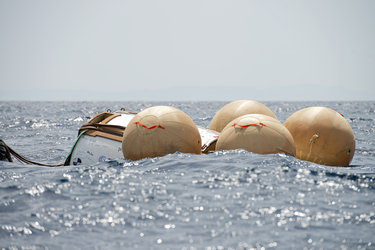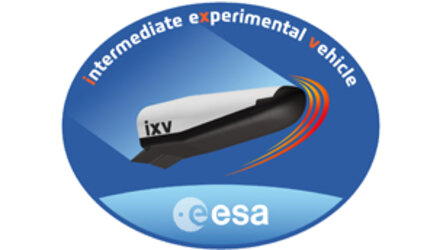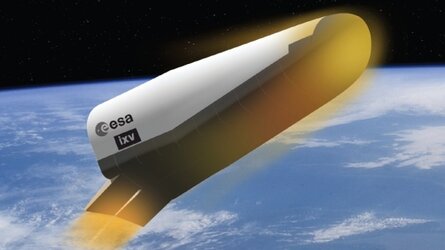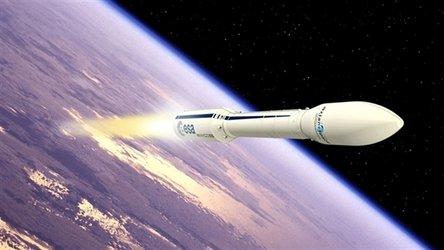Setting sail for ESA spaceplane recovery
The boat that will lift ESA’s unmanned IXV spaceplane out of the Pacific Ocean after the research flight next month set sail on Saturday from Genoa in Italy.
The Nos Aries received a special send-off at the 54th International boat show in Genoa as it began its long journey across the Mediterranean Sea and the Atlantic.
A team of mission engineers will board in Panama and from there sail through the Panama Canal and into the Pacific.
First, they will check the ship’s antenna and telemetry receivers are working properly after the long journey. The autotracking of the antenna that will pick up the signals from the Intermediate eXperimental Vehicle on its flight back to Earth will be checked by following low-orbit satellites.

Although the team have already practised the tricky manoeuvre of lifting IXV out of the ocean, they will continue to hone their skills under a wide range of conditions.
Nos Aries, the Mission Control Centre in Turin and ESA’s Spaceport in Kourou, French Guiana will be linked up via Inmarsat satellite for IXV mission simulations using voice, data and video.
The crew will also take part in a dress rehearsal of the launch, three days before the actual liftoff.
The ship will reach its destination four days before the flight, slightly north of the equator, on a circle 25 km from the target landing spot. This distance guarantees the safety of the ship while allowing maximum telemetry reception and rapid access to IXV after splashdown.
On flight day, the ship will release weather balloons to check the wind conditions over the Pacific to provide information on IXV’s descent path.
If sea conditions allow the launch to go ahead, Nos Aries will receive the readings from IXV’s 300 sensors during descent and then pick up the beacon signals to pinpoint the craft in the water.

Divers in speedboats will approach the floating craft and then stand back as sniffer devices check for residual propellant fumes. On the all-clear, the recovery cranes will carefully hoist IXV to safety before the fuel tank is cleaned out for the journey home to Europe.
Lofted by a Vega rocket, IXV will test the technologies and critical systems for Europe’s future automated reentry vehicles returning from low orbit.















 Germany
Germany
 Austria
Austria
 Belgium
Belgium
 Denmark
Denmark
 Spain
Spain
 Estonia
Estonia
 Finland
Finland
 France
France
 Greece
Greece
 Hungary
Hungary
 Ireland
Ireland
 Italy
Italy
 Luxembourg
Luxembourg
 Norway
Norway
 The Netherlands
The Netherlands
 Poland
Poland
 Portugal
Portugal
 Czechia
Czechia
 Romania
Romania
 United Kingdom
United Kingdom
 Slovenia
Slovenia
 Sweden
Sweden
 Switzerland
Switzerland





























